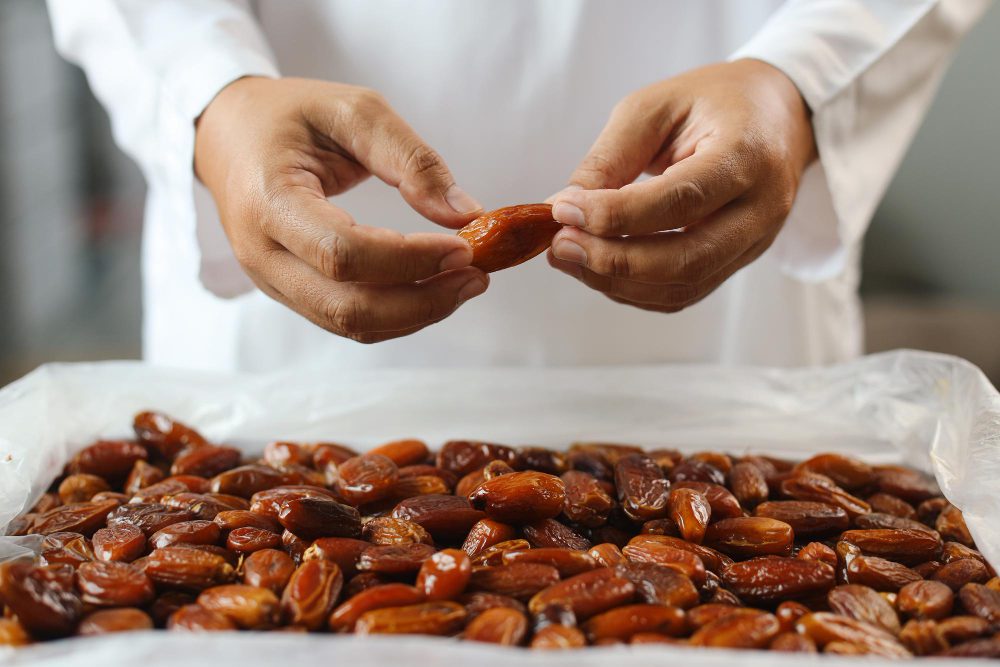Protein Popcorn Sensation: The New Health Trend
Have you ever heard of Protein Popcorn? It’s the new trend that’s taking the snack world by storm! Imagine enjoying your favorite movie night treat but with a healthy twist that boosts your protein intake. Whether you’re a fitness enthusiast looking to increase your daily protein or just someone who loves finding tasty yet nutritious snacks, Protein Popcorn is for you. This delicious innovation merges the irresistible crunch of popcorn with the benefits of protein, offering a perfect balance of taste and nutrition. Let’s dive into how Protein Popcorn is changing snack time! 🍿
Introduction to Protein Popcorn
In the ever-evolving world of snacks, protein popcorn has recently captured the spotlight, merging the delicious appeal of popcorn with the healthful benefits of added protein. This new trend offers snack enthusiasts a unique option that satisfies cravings while contributing to their nutritional needs. But what exactly sets protein popcorn apart in this crowded snack market? 🥤
What Makes Protein Popcorn Unique
Protein Popcorn is unique because it combines the classic crunch and taste of traditional popcorn with additional protein content, making it a healthier snack alternative. The secret lies in the innovative process where popcorn is coated with a protein-rich covering, often infused with protein powders, to elevate its nutritional profile.
What’s interesting is that the additional protein does not compromise on the classic lightness or crunchiness of popcorn, ensuring snack lovers don’t have to sacrifice flavor for health benefits. Furthermore, protein popcorn comes in various flavors and varieties, expanding its appeal to different taste preferences.
The Rise in Popularity
The popularity of protein popcorn is on the rise due to growing awareness of health and nutrition among consumers. This snack aligns perfectly with modern dietary trends that favor high-protein and low-calorie options. As people become more health-conscious, they look for snacks that complement their lifestyle and fitness goals. Protein popcorn fits this criterion perfectly, making it an attractive option for individuals seeking to balance indulgence with nutrition.
Social media has also played an integral role in popularizing protein popcorn, with influencers and fitness enthusiasts sharing their positive experiences. As a result, the demand for protein popcorn continues to grow, transforming the way we perceive traditional snack foods.
Nutritional Benefits of Protein Popcorn

Protein Popcorn sensation: the new trend. 🎉 It’s not just about satisfying your munchies; this treat packs a punch when it comes to health benefits. Let’s delve into the nutritional wonders that make protein popcorn a go-to snack.
High-Protein Content
High-Protein Content is what sets protein popcorn apart from its ordinary counterparts. Typically, popcorn is known for being a light, airy snack without much nutritional heft. However, when infused with protein, it becomes a powerhouse of nutrition. These protein-infused kernels satisfy hunger while supporting muscle growth and repair, making it an excellent choice for fitness enthusiasts and gym goers.
Protein Popcorn is often enhanced with products like whey protein or plant-based proteins which significantly boost its protein levels. A typical serving can contain as much as 10 grams of protein, transforming it from a mere snack to a substantive mini-meal.
Low-Calorie and Low-Fat Snack Option
Low-Calorie and Low-Fat Snack Option is another reason why many health-conscious individuals are making the switch to protein popcorn. With fewer calories than a traditional bag of chips and significantly less fat, it’s a heart-healthy option that doesn’t compromise on taste.
Protein Popcorn is designed to fit into balanced diets, allowing snackers to enjoy their favorite treats without the guilt. Most commercial variations take care to keep oil usage to a minimum, prioritizing popping methods that require little to no fat, like air-popping. For those watching their weight, this trendy snack provides the luxury of indulgence while maintaining strict dietary goals.
Rich in Vitamins and Minerals
Rich in Vitamins and Minerals content makes Protein Popcorn more than just a protein solution. Many versions of the snack are fortified with essential vitamins and minerals. Think along the lines of B vitamins, zinc, calcium, and iron — nutrients crucial for a variety of bodily functions, from metabolism to bone health.
The enriched formula helps in meeting daily nutritional needs, especially for those on restrictive diets. For vegans or vegetarians who might struggle to consume enough of these nutrients, protein popcorn provides a delicious way to supplement their nutrient intake.
In conclusion, protein popcorn is more than a passing fad. With its impressive nutritional profile, this snack is indeed a smart addition to any health-conscious diet. 🍿
Flavors and Varieties of Protein Popcorn
Protein popcorn is not just about nutrition; it’s also about flavor! There’s something for everyone when it comes to the variety of flavors available. Let’s explore the different choices you can indulge in.
Classic Choices
Classic choices never go out of style, especially when it comes to protein popcorn. These flavors are favorites for a reason—they’re simple, recognizable, and hit just the right spot. You can expect to find traditional tastes like cheese or butter, which are loved by popcorn enthusiasts seeking both nostalgia and nutrition. Many brands also offer sea salt and olive oil options for a light but flavorful snacking experience.
Innovative Flavor Combinations
In the world of snacks, innovation is key, and protein popcorn is no exception to this rule. More adventurous palates may enjoy creative combinations that keep them coming back for more. Picture bold flavors like jalapeño cheddar or sriracha lime, adding a spicy twist to your typical popcorn snack. For those who crave something entirely new, flavors like truffle parmesan or coconut curry are sure to delight and surprise.
Sweet vs. Savory Options
When it comes to choosing your perfect protein popcorn, the age-old question remains: sweet or savory? Both types offer their own unique appeal and advantages. For those with a sweet tooth, options like dark chocolate drizzle, cinnamon sugar, or peanut butter cup are perfect guilty pleasures without the guilt. On the savory side, you have choices such as BBQ, herb and garlic, or rosemary thyme—perfect for those evenings you’re craving something salty and satisfying.
In the end, whether you lean towards traditional favorites or love exploring bold, new tastes, there’s a protein popcorn flavor for every preference.
Making Protein Popcorn at Home
Bringing the protein popcorn trend into your kitchen is not only exciting but also rewarding. You can create your personalized snack, tweaking the flavors and nutritional content to suit your tastes and dietary needs. This part of the article will guide you on how to make protein popcorn at home with a simple recipe and useful tips to achieve perfection.
Simple Homemade Recipe
Master the art of making protein popcorn from the comfort of your own home with this easy-to-follow recipe. 🤤
Ingredients Needed
To whip up a perfect batch of protein popcorn, you’ll need the following ingredients:
- 1/2 cup of popcorn kernels
- 2 tablespoons of coconut oil or olive oil
- 1/4 cup of your favorite protein powder (vanilla or chocolate can be intriguing options)
- 1 tablespoon of cinnamon or cacao powder for extra flavor
- Salt to taste
- A dash of honey or low-calorie sweetener for a hint of sweetness (optional)
This list can be easily customized depending on your dietary preferences and flavor cravings.
Step-by-Step Instructions
- Heat the Oil: Begin by heating the coconut or olive oil in a large pot over medium heat. Add a few kernels to the pot and cover it. When the kernels pop, you’ll know the oil is ready.
- Pop the Kernels: Add the remaining kernels to the pot, covering it again, and shake occasionally. Once the popping slows down to every few seconds, remove the pot from the heat.
- Mix in Protein Powder: Once the popcorn has cooled slightly, but is still warm, sprinkle your chosen protein powder over it. Stir well to ensure even coating.
- Add Flavor Enhancers: Sprinkle on the cinnamon or cacao powder and add salt to taste. If you’re opting for a sweet flavor, drizzle with honey or your alternative sweetener and mix well.
- Cool and Store: Let the popcorn cool completely before transferring it to an airtight container. This ensures it remains crunchy and delicious.
Tips for Perfect Protein Popcorn
Crafting the ultimate protein popcorn can be as much about technique as it is about ingredients. Here are some expert tips to refine your popcorn-making skills:
- Selecting the Right Protein Powder: Use a high-quality, fine-textured protein powder. This ensures it binds well to the popcorn and delivers a consistent flavor.
- Achieving Even Coating: For a more uniform flavor, consider misting the popcorn with a small amount of oil spray before adding the protein powder. It helps the powder stick better.
- Avoid Overheating: Excessive heat can degrade the protein powder and can lead to uneven texture. Always remove the popcorn from direct heat when adding proteins and flavors.
- Storage Hacks: Store the popcorn in a cool, dry place. Moisture is the enemy of crispness, so using an airtight container is key.
By following these steps and tips, you can customize your protein popcorn to be just as delicious and satisfying as any store-bought version, with the added bonus of a personal touch. Happy snacking! 🍿
Commercial Brands Offering Protein Popcorn
Protein popcorn has swiftly captured the attention of snack enthusiasts everywhere, and a number of commercial brands have jumped on the bandwagon to offer their own tasty versions. Let’s dive into the various brands that have embraced this trend and where you can get your hands on a bag of these protein-packed delights.
Popular Brands and Their Offerings
A growing list of popular brands is fueling the protein popcorn craze, each offering a unique spin on the classic snack. Here are some you should definitely check out:
- RightRice: Known for its high-protein grains, RightRice offers protein popcorn that matches their commitment to plant-based protein without sacrificing flavor.
- SkinnyPop: Already famous for its low-calorie snacks, SkinnyPop has expanded its range with a protein-rich popcorn that still retains its simplicity and deliciousness.
- Optimum Nutrition: True to its name, Optimum Nutrition adds a health-conscious twist with their protein popcorn, designed specifically for fitness enthusiasts looking for a snack that supports their workouts.
- Pop Zero: This innovative brand incorporates protein into their popcorn while offering amazing flavor profiles that are both delightful and nutritious.
Each brand tends to focus on creating snack options that cater to those conscious of their protein intake while not compromising on taste. The competitive edge often lies in flavor, the source of protein, and any additional health benefits offered.
Where to Buy Protein Popcorn
Finding protein popcorn is easier than you might think. With its rise in popularity, various retail options are available:
- Online Retailers: Amazon, Walmart, and specialty health food sites like Thrive Market are top spots online for purchasing protein popcorn, offering both variety and convenience.
- Supermarkets: Mainstream grocery chains like Kroger, Safeway, and Target have begun featuring shelves stocked with trendy snacks, including protein popcorn, particularly in their health food aisles.
- Fitness Stores: Specialized health and fitness stores such as GNC and Vitamin Shoppe have embraced the concept of protein snacks, often showcasing a variety of protein popcorn brands.
- Local Health Food Stores: These stores cater to the health-conscious consumer and often carry niche products like protein popcorn, providing another avenue for purchase.
Whether you prefer browsing in-store to see your options up close or you’re an online shopping enthusiast, getting your hands on protein popcorn is just a few clicks or steps away. Dare to explore this delicious and healthful trend and enhance your snacking experience!
Incorporating Protein Popcorn into Diets
Incorporating Protein Popcorn into diets has become a delightful and healthy way to enjoy snacks guilt-free. This innovative treat is not only tasty but also packed with nutritional benefits. Whether you are an athlete, a busy professional, or someone just trying to maintain a balanced diet, Protein Popcorn can easily find a place in your daily routine. Below are some creative and effective ways to integrate this special snack into your life.
As a Pre- or Post-Workout Snack
As a pre- or post-workout snack, Protein Popcorn stands out as a top choice. Its high protein content provides the essential muscle-building nutrients that can help you recover and gain strength after workouts. Consuming protein before exercising can help sustain energy levels, while having it post-workout aids in muscle recovery and growth.
- Pre-Workout Benefits
The complex carbohydrates found in popcorn offer a steady energy source to fuel your workout. Paired with protein, they make an excellent pre-exercise snack that won’t weigh you down but will keep you energized. - Post-Workout Advantages
After a strenuous workout, enjoying some Protein Popcorn can replenish your depleted glycogen stores, thanks to its carbohydrate content, while the protein assists in muscle repair. It’s a perfect low-calorie, nutritious snack to consume right after you’ve finished sweating it out at the gym!
Combining with Other Healthy Foods
Combining Protein Popcorn with other healthy foods opens up a world of nutritious possibilities. It can easily be paired with a variety of ingredients to enhance both flavor and nutritional value.
- Trail Mix
Mix Protein Popcorn with nuts, seeds, and dried fruits for a power-packed trail mix. This blend provides a balance of fats, fibers, and proteins, making it an ideal snack for boosting energy and keeping hunger at bay throughout the day. - Smoothie Bowls
Topping smoothie bowls with a sprinkle of Protein Popcorn can add a satisfying crunch and a boost of protein. It’s a creative way to enhance your breakfast or midday snack with some extra nutrition. - Salad Topper
Add a handful of Protein Popcorn to your salads for an unexpected yet delicious crunch. This not only elevates the texture of the salad but also boosts the protein content.
Incorporating these strategies for using Protein Popcorn into your diet can make snack time both enjoyable and guilt-free. With so many versatile options, it’s easy to make this trend a part of a healthy eating plan.
Conclusion: Is Protein Popcorn Here to Stay?
The question of whether Protein Popcorn is here to stay is not just a matter of market trends but also a reflection of changing consumer habits. As people become more health-conscious, snacks that offer nutritional benefits, like protein popcorn, are becoming increasingly appealing.
Protein Popcorn capitalizes on the growing demand for snacks that are not only enjoyable but also contribute positively to health. It ticks several boxes for modern consumers — it’s nutrient-rich, convenient, and satisfies cravings without the guilt. As consumer preferences continue to favor snacks that support a healthy lifestyle, protein popcorn’s place on supermarket shelves seems secure.
A snack that so seamlessly fits into modern dietary trends is bound to have staying power.
This innovation in the snack industry signifies a shift towards integrating health and indulgence, striking a balance between deliciousness and wellness. As long as consumers yearn for guilt-free snacking options that align with a protein-rich diet, protein popcorn is likely to remain a popular choice.
Moreover, the versatility of protein popcorn, with its diverse flavor offerings and easy incorporation into daily diets, suggests that it can adapt to various palates and preferences, thus broadening its consumer base.
In conclusion, as long as the trend of functional foods remains vibrant and consumers continue to prioritize health without sacrificing flavor, Protein Popcorn is well-poised to not just survive but thrive in the snack market. So feel free to munch away on your favorite protein popcorn! 🍿










